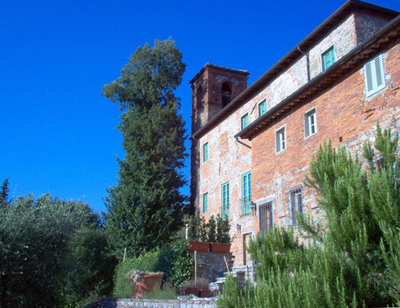
Itineraries Italy: Villa Cenami at Saltocchio – Lucca
Built during the second half of the 16th century, the villa is situated at the end of a long avenue which was once lined with poplars.
The villa and its gate provide the scenic back drop to the road tht leads up to it.
The rational composition of the opening in the facade is enhanced by a roof with balustrades and pyramid shaped stones, vases and animals which date back to before the first half of the 1800s.
The temple in the centre of a balustrade, a belvedere over the surrounding countryside, also dates back to this period.
Near the villa, there used to be a farm, a large lemon house with a cross-vault roof, storerooms for the wine and oil, and an olive mill, which was also mentioned by Georg Cristoph Martini who helped to press the olives for the first time.




